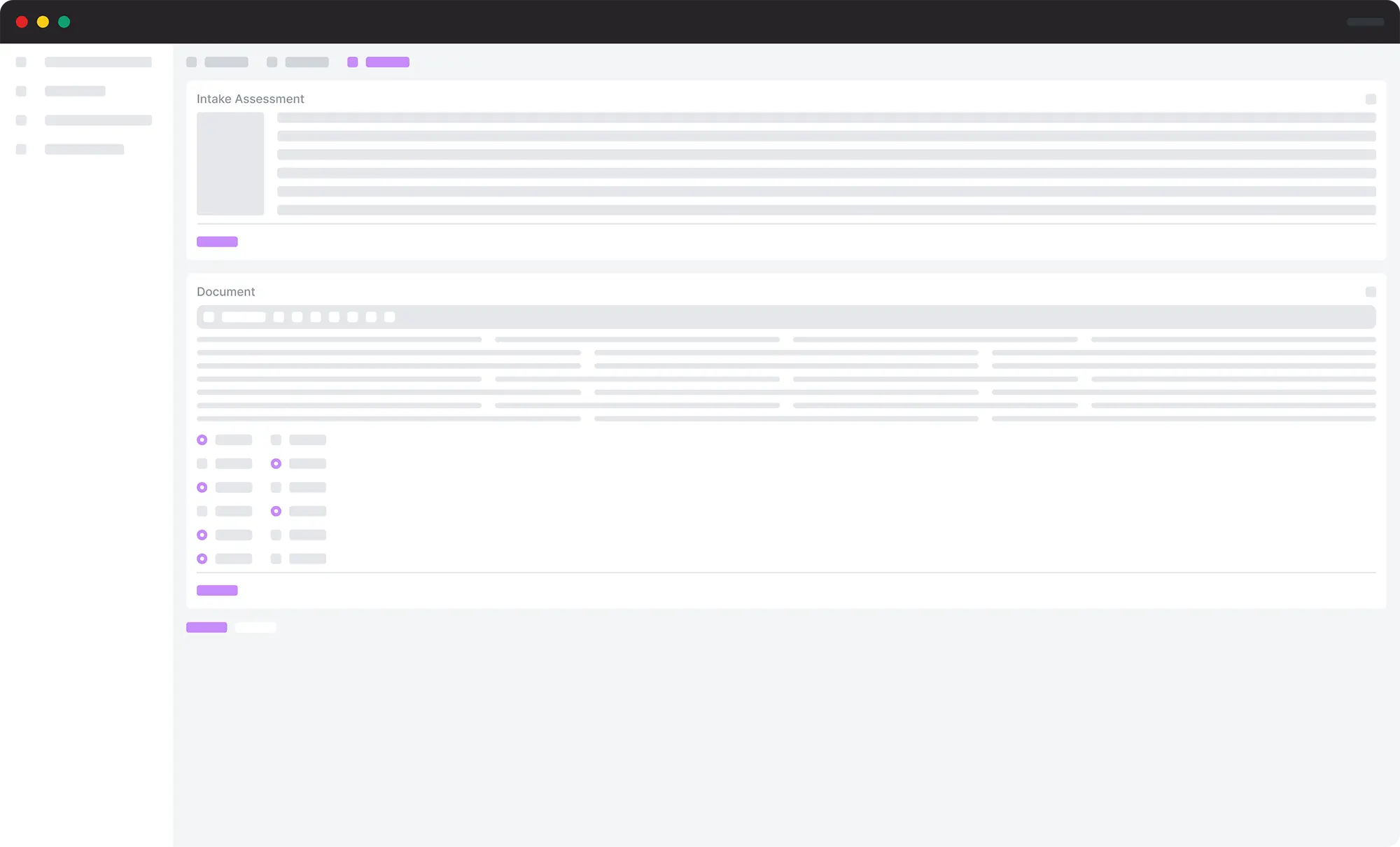Intake Assessment
The Intake Assessment Template simplifies the initial evaluation process, enabling quick and comprehensive capture of essential patient history and primary concerns. It’s designed to efficiently gather critical information, setting a solid foundation for effective treatment planning.

Streamlining Intake Assessments with AutoNotes
In the realm of therapy, the intake assessment is a critical first step in establishing a therapeutic relationship and setting the stage for effective treatment. This initial evaluation gathers comprehensive information about a new client, providing insights into their history, current state, and potential risks. AutoNotes enhances this process by streamlining documentation, ensuring accuracy, and maintaining compliance.
What Are Intake Assessments?
Intake assessments in therapy are detailed evaluations conducted during a client’s first visit. These assessments aim to collect essential information about the client’s mental, physical, and social health to inform a tailored treatment plan. Effective intake assessments are crucial for accurately diagnosing and addressing the client’s needs.
AutoNotes: Enhancing Efficiency in Intake Documentation
AutoNotes provides therapists with an advanced tool to efficiently document comprehensive intake assessments. Through its intuitive interface and customizable templates, AutoNotes ensures that all critical client information is accurately recorded and easy to review.
Key Features of AutoNotes for Intake Assessments:
- Customizable Templates: AutoNotes offers flexible templates that can be adapted to various therapeutic settings, ensuring that therapists can capture all relevant client information without redundancy.
- Comprehensive Data Collection: From basic demographic information to complex psychosocial histories, AutoNotes allows therapists to comprehensively capture and organize data in a structured manner.
- Integrated Risk Assessments: AutoNotes includes specific sections for detailed risk assessments, ensuring that potential dangers to the client or others are systematically evaluated and documented.
How to Write an Intake Assessment with AutoNotes
Imagine a scenario where a therapist meets a new client for the first time. Here’s how AutoNotes can facilitate a thorough and efficient intake assessment:
- Client Information: Enter the client’s age, gender identity, occupation, and other demographic details into the designated fields in AutoNotes.
- Documenting Presenting Concerns: Record the client’s initial concerns using their exact words to capture the urgency and context of their issues accurately.
- Historical Information: Input data concerning the client’s treatment history, medical history, and psychosocial background, providing a clear picture of past interventions and ongoing issues.
- Mental Status Examination: Detail observations about the client’s appearance, behavior, mood, and other mental status indicators directly into the template.
- Risk and Safety Evaluations: Utilize AutoNotes’ structured fields to assess risk factors and document any immediate safety concerns, including the client’s potential for self-harm or violence.
- Screening Tools: Input results from standardized screening tools to support diagnostic decisions and track baseline symptoms.
- Diagnostic Impressions and Treatment Planning: Based on the collected data, generate preliminary diagnostic impressions and propose specific, measurable treatment goals and interventions.
Intake Assessment Example
Presenting Concerns:
Client reports feeling "overwhelmed and anxious" about recent life changes and struggles with sleep.
Treatment History:
Client has been in therapy three years ago for depression, attended approximately 12 sessions, and stopped after feeling better.
Medical History:
Client has a history of hypothyroidism, currently managed with medication.
Psychosocial History:
Client describes a supportive family environment but expresses significant stress at work, contributing to current issues.
Mental Status Examination:
Client appears well-groomed but visibly anxious. Speech is rapid, mood is anxious, and affect somewhat congruent with stated mood.
Risk Assessment:
Client denies any current thoughts of self-harm or suicide. No past history of violence. Reports some social isolation.
Screening Tools:
PHQ-9 Score: 14 (moderate depression)
GAD-7 Score: 10 (moderate anxiety)
Diagnostic Impressions:
Preliminary diagnoses include Generalized Anxiety Disorder and Moderate Depressive Episode.
Proposed Treatment Goals & Interventions:
Goal: Reduce anxiety levels from 10 to 4 on the subjective anxiety scale within three months using CBT techniques and mindfulness exercises.
Collateral & Safety Plan:
Regular follow-ups every two weeks. Encourage client to establish a daily routine that includes mindfulness practice. Provide crisis hotline numbers and plan for reaching out to support network in case of emergency.
Simplifying Intake Assessments with AutoNotes
AutoNotes revolutionizes the way therapists conduct intake assessments, offering tools that ensure accuracy, efficiency, and compliance. By leveraging AutoNotes, therapists can spend less time on paperwork and more time focusing on client care, ultimately leading to better therapeutic outcomes. As the initial step in the therapeutic process, streamlined intake assessments set the foundation for effective and personalized treatment plans.



